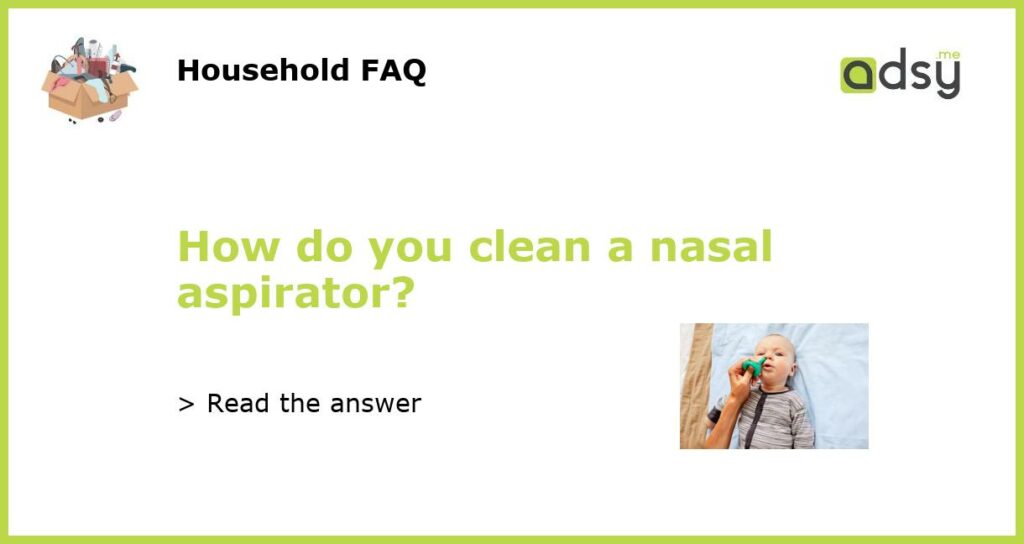Why clean your nasal aspirator regularly?
Before we dive into the ‘how’, let’s first discuss why it’s important to clean your nasal aspirator regularly. Nasal aspirators are essential tools used to clear mucus from infants’ and children’s noses, and they help with nasal congestion. Babies and children have sensitive respiratory systems; thus, dirty nasal aspirators with leftover mucus can expose them to harmful bacteria and viruses. Proper cleaning also ensures that the aspirator functions correctly, and it will last longer.
What do you need to clean your nasal aspirator?
Now that we know why it’s essential to clean your nasal aspirator regularly let’s look at what you need for the cleaning process. You’ll need warm water, dish soap, a clean bowl, a small brush (like a toothbrush), and sterile saline solution. Here, sterile saline solution, like Squip Saline Nasal Spray, is an important consideration because it ensures that the water you use for cleaning is sterilized, eliminating the risk of contamination.
How do you clean your nasal aspirator?
The first step is to disassemble the aspirator, separating the bulb, nozzle, and collection cup, as applicable. Then, add a squirt or two of dish soap to the bowl and fill it with warm water. Place all the parts of the aspirator into the bowl of warm, soapy water. Next, use the brush to scrub each component of the aspirator carefully. Be sure to clean all the nooks and crannies because dirt and mucus can get stuck in these areas.
Rinse thoroughly with sterile saline solution or purified water to get rid of any soap residue, and then you can use a clean towel or air-dry the parts before reassembling the nasal aspirator. For the bulb, turn it upside down to remove any remaining water and let it air-dry completely. For the collection cup and nozzle, wipe them dry with a dry towel to prevent moisture build-up.
How often should you clean your nasal aspirator?
It’s essential to clean your nasal aspirator after each use to prevent the build-up of germs or bacteria. It would be best to have one or two spare parts handy, so you don’t have to wait for the parts to dry completely before your next use. If the aspirator is used more regularly, it is recommended to clean it after each use.
In conclusion
Regular cleaning of your nasal aspirator doesn’t take much time, but it significantly benefits the health and well-being of your baby or child. By following the steps outlined, you can ensure that the aspirator is free from germs and bacteria, and it will last longer.






